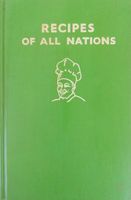Label
All
0
Clear all filters
Prue Leith's latest book is now on ckbk. Get 25% off ckbk Membership
Austria and Hungary
Appears in
Published 1935
Although the cookery of Austria is highly characteristic and national, it has been greatly influenced and moulded by that of the other nations with which she has come in close contact in the course of her varied and chequered career throughout the centuries.
We find, first of all, traces of the German domination, and a number of Austrian dishes are undoubtedly of Teutonic origin, although in the course of time their interpretation has become so different that Austria may well claim them as part and parcel of her gastronomic heritage. The difference, in fact, is as great as that of the same waltz tune interpreted by a German band and a Viennese band—the notes and harmonies are identical, but there is a brilliancy, a sparkling vitality, and exuberance in the execution of the latter which is lacking in the more ponderous and sentimental execution by the former. The famous Häring Salat, for instance—now almost an international institution—is a typical example of this: taste it in Berlin and taste it in Vienna. The ingredients are more or less the same. Why is it different? Because in Berlin a German mind visualised it and a German hand made it, and because in Vienna its tone and rhythm were slightly altered by the light and deft hand of an Austrian. It requires but a slight touch, an additional amount of flavouring, some subtlety in the preparation or cooking of a dish to make it cross a frontier and to label it as belonging to one nation or another.
Become a Premium Member to access this page
Unlimited, ad-free access to hundreds of the world’s best cookbooks
Over 150,000 recipes with thousands more added every month
Recommended by leading chefs and food writers
Powerful search filters to match your tastes
Create collections and add reviews or private notes to any recipe
Swipe to browse each cookbook from cover-to-cover
Manage your subscription via the My Membership page
Best value
Part of
Advertisement
Advertisement
The licensor does not allow printing of this title


